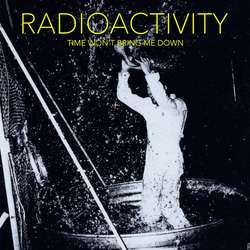You know that Less Than Jake song, "All My Best Friends Are Metalheads?" Well, just keep that in mind for a minute.
On The Architects' third release, Vice, there are catchy, group-sung choruses that spring images of dudes in leather jackets walking in synch down a dark street. This, however, is not an ironic project. The Kansas City group features three former Gadjits members, including vocalist Brandon Phillips who both shares names with an all-star caliber Cincinnati Red as well as runs Anodyne Records.
The Architects see themselves as pure rock-n-roll, rejuvenating the Detroit sound while invigorating it with a country outlaw mentality. The record kicks off with "Cold Hard Facts," which has flashes of the gritty The Clash/Replacements everyman rock the band aims for. Unfortunately, the sound shifts quickly, losing the everyman for polished, dramatic rock.
While they are aiming for a grimy, dangerous "sound of the streets," Vice is too polished, melodic, and moreso too dramatic; it feels like a production, with more than a hint of 80's glam. The chorus of "Hard Times" makes me hearken back to the Night Ranger/Loverboy days of tough lyrics with a smooth delivery and a lot of posturing. The main separation between The Architects and the 80's glam rock would be the Phillips' lead vocals. They lack some of the range (namely falsetto) of the era, but have a little more edgy Westerberg in them. It's a bit tougher than the aforementioned 80's bands, but this isn't the kind of music you expect to hear in a dark alley, unless it's on a stage. Think about "Living on a Prayer" from Bon Jovi. Yes, it's a working class song - but that alone don't make it tough.
The Architects namedrop some legendary country storytellers as influences, but the delivery here focuses on inflection and drama with heavy-ish guitars as the backdrop. "Oklahoma's" introductory verse sets the tone and then gives way to a harmonized chorus of "Oh-oh, we've got your badge, we've got your number." As the chorus switches back to Phillips' lead, he adds a dramatic inflection to his tone - just in case you didn't get it yet that the song is about a rogue, make-my-own-rules badass. Images of rock opera pop into my head. "Mrs. Doyle" is another of these overly dramatic inflections that have enough cheese to let you know it's not an accident, but not fully ironic either.
"Daddy Wore Black" is the best track on the record, with a catchy chorus, straightforward rock chords, and less drama. However, I think even if the record contained twelve of these, it would still be too theatrical for my tastes.



